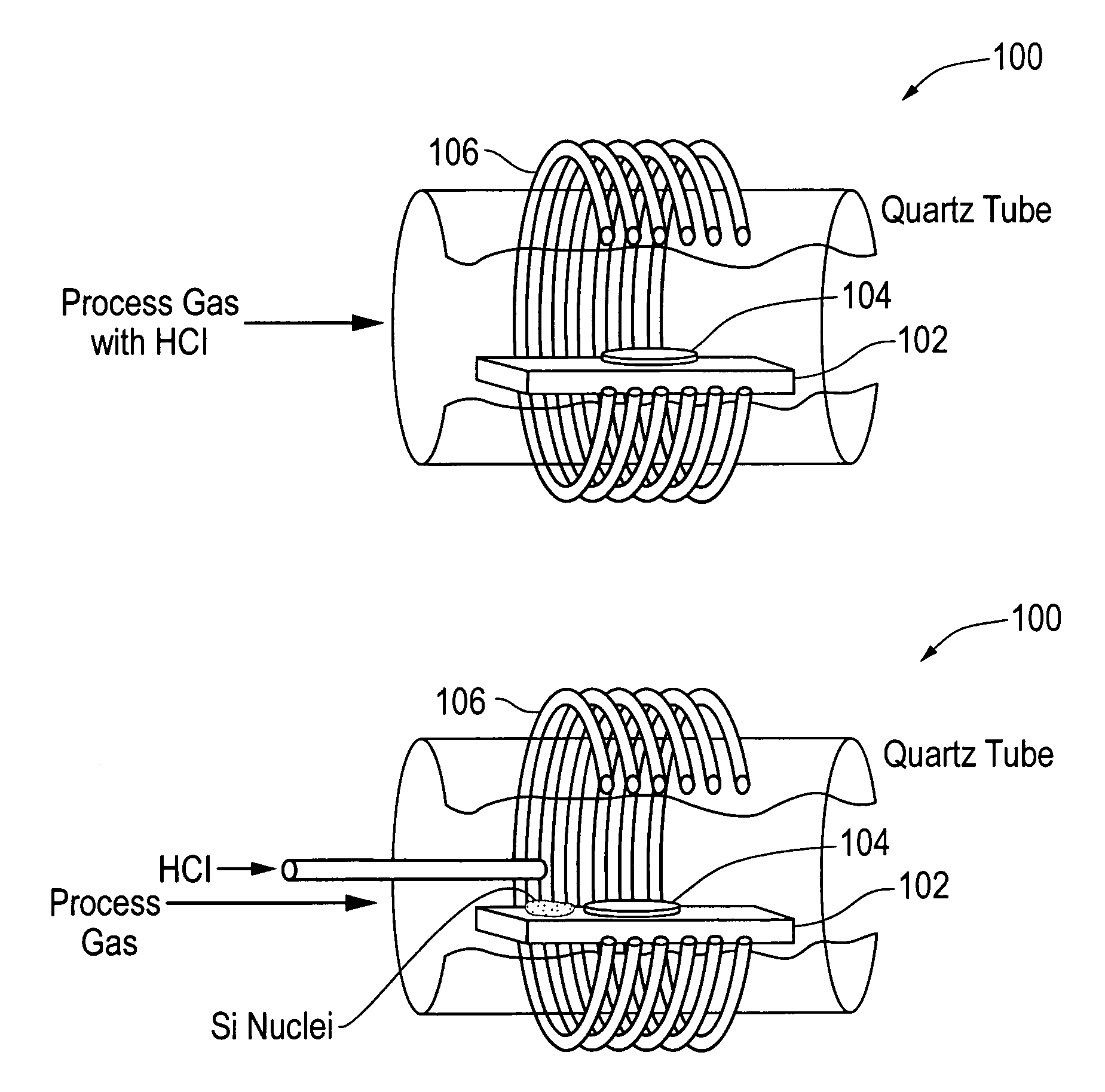Dissociation of silicon clusters in a gas phase during chemical vapor deposition homo-epitaxial growth of silicon carbide
a silicon carbide and gas phase technology, applied in the field of epitaxial crystal growth of silicon carbide, can solve the problems of difficult to reliably form a quality layer on a large substrate, poor surface morphology of a layer grown at atmospheric pressure, and high degree of homogeneous nucleation
- Summary
- Abstract
- Description
- Claims
- Application Information
AI Technical Summary
Benefits of technology
Problems solved by technology
Method used
Image
Examples
Embodiment Construction
[0015]The current invention is an improvement to the standard SiC epitaxy as it may eliminate or greatly reduce the homogeneous nucleation. By adding a dissociation-enhancer into a precursor stream containing a silicon source, silicon clusters can be dissociated in the gas phase. The dissociation-enhancer may be, for example, a group VII-containing component, such as a chlorine-containing component. In a preferred embodiment of the invention, HCl is used as the dissociation enhancer. Other silicon-etching gases are also within the scope of the invention.
[0016]Experiments show that, not only can the morphology improve markedly with use of a dissociation enhancer, but, surprisingly, the growth rate increases too, likely because there is more silicon available for growth. The results are particularly surprising in light of critics having long held that a chlorine-containing compound such as HCl will etch everything it comes in contact with, and will reduce the growth rate.
[0017]The inv...
PUM
| Property | Measurement | Unit |
|---|---|---|
| temperature | aaaaa | aaaaa |
| temperature | aaaaa | aaaaa |
| temperature | aaaaa | aaaaa |
Abstract
Description
Claims
Application Information
 Login to View More
Login to View More - R&D
- Intellectual Property
- Life Sciences
- Materials
- Tech Scout
- Unparalleled Data Quality
- Higher Quality Content
- 60% Fewer Hallucinations
Browse by: Latest US Patents, China's latest patents, Technical Efficacy Thesaurus, Application Domain, Technology Topic, Popular Technical Reports.
© 2025 PatSnap. All rights reserved.Legal|Privacy policy|Modern Slavery Act Transparency Statement|Sitemap|About US| Contact US: help@patsnap.com


